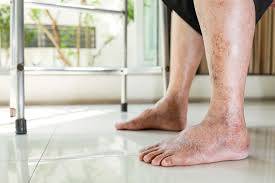Preventing Peripheral Artery Disease (PAD): Strategies and Insights
Peripheral Artery Disease (PAD) is a condition characterized by the narrowing of arteries due to plaque buildup, leading to reduced blood flow to the limbs, most commonly the legs. PAD can cause discomfort, pain, and, in severe cases, complications like ulcers and gangrene. While PAD can be managed with medical interventions, prevention is always better than cure. Adopting a proactive approach to lifestyle and health habits can significantly reduce the risk of developing PAD. In this comprehensive guide, we'll explore various strategies and insights on how to prevent PAD effectively.
### Understanding Peripheral Artery Disease (PAD)
Before delving into prevention strategies, it's essential to understand the factors that contribute to PAD. The primary cause of PAD is atherosclerosis, a condition where plaque builds up in the arteries, restricting blood flow. Several risk factors increase the likelihood of developing PAD:
1. **Smoking:** Tobacco smoke damages blood vessels and increases the risk of atherosclerosis.
2. **Diabetes:** High blood sugar levels contribute to artery damage.
3. **High Blood Pressure:** Hypertension strains the arteries, making them more susceptible to damage.
4. **High Cholesterol:** Elevated levels of LDL ("bad") cholesterol lead to plaque formation in the arteries.
5. **Obesity:** Excess weight increases the workload on the heart and promotes atherosclerosis.
6. **Lack of Physical Activity:** Sedentary lifestyles contribute to poor circulation and muscle degeneration.
7. **Age and Genetics:** Advancing age and a family history of PAD increase the risk.
### Prevention Strategies for PAD
1. **Quit Smoking:** Smoking cessation is perhaps the most critical step in preventing PAD. Seek support from healthcare professionals or join smoking cessation programs to quit successfully.
2. **Manage Diabetes:** Keep blood sugar levels under control through diet, exercise, and medication if necessary. Regular monitoring and consultation with a healthcare provider are essential for diabetic individuals.
3. **Control Blood Pressure:** Monitor blood pressure regularly and take prescribed medications to manage hypertension. Adopt a low-sodium diet rich in fruits, vegetables, and whole grains.
4. **Maintain Healthy Cholesterol Levels:** Consume a diet low in saturated and trans fats to keep cholesterol levels in check. Include foods rich in omega-3 fatty acids, such as fatty fish, flaxseeds, and walnuts.
5. **Achieve and Maintain a Healthy Weight:** Aim for a healthy body weight through a balanced diet and regular exercise. Even modest weight loss can significantly reduce the risk of PAD.
6. **Adopt a Heart-Healthy Diet:** Emphasize fruits, vegetables, whole grains, lean proteins, and healthy fats in your diet. Limit processed foods, sugary beverages, and excessive salt intake.
7. **Engage in Regular Physical Activity:** Incorporate at least 150 minutes of moderate-intensity aerobic exercise or 75 minutes of vigorous-intensity exercise per week. Activities like walking, cycling, swimming, and dancing are beneficial for cardiovascular health.
8. **Manage Stress:** Practice stress-reduction techniques such as deep breathing, meditation, yoga, or tai chi to lower stress levels and promote relaxation.
9. **Limit Alcohol Consumption:** Moderate alcohol consumption is acceptable, but excessive drinking can contribute to high blood pressure and other cardiovascular problems. Stick to recommended limits: up to one drink per day for women and up to two drinks per day for men.
10. **Take Medications as Prescribed:** If you have underlying medical conditions like diabetes, high blood pressure, or high cholesterol, adhere to your prescribed medications diligently. Consult your healthcare provider if you experience any side effects or have concerns about your treatment regimen.
11. **Regular Health Check-ups:** Schedule regular check-ups with your healthcare provider to monitor your overall health and assess your risk factors for PAD. Early detection and intervention can prevent complications and improve outcomes.
12. **Foot Care:** Inspect your feet regularly for any signs of injury, infection, or poor circulation. Keep your feet clean, moisturized, and protected, and wear comfortable, properly fitting shoes.
13. **Know Your Family History:** Understand your family's medical history, especially regarding cardiovascular diseases. Discuss any significant family history with your healthcare provider to determine your risk factors.
### Conclusion
Preventing Peripheral Artery Disease requires a multifaceted approach that addresses various risk factors and promotes overall cardiovascular health. By adopting healthy lifestyle habits, managing underlying medical conditions, and seeking timely medical advice, you can significantly reduce your risk of developing PAD and its associated complications. Remember that prevention is a lifelong commitment, and small changes in daily habits can make a substantial difference in your vascular health. Take charge of your well-being today to enjoy a healthier, more active tomorrow.


